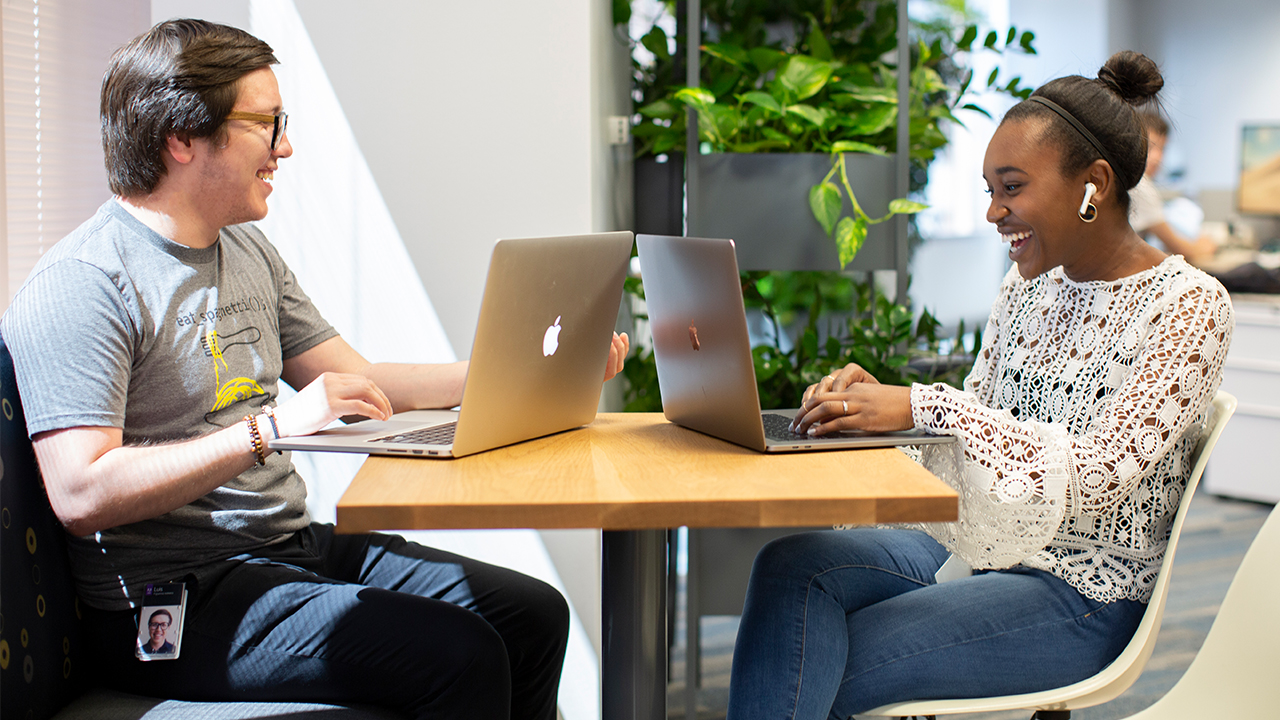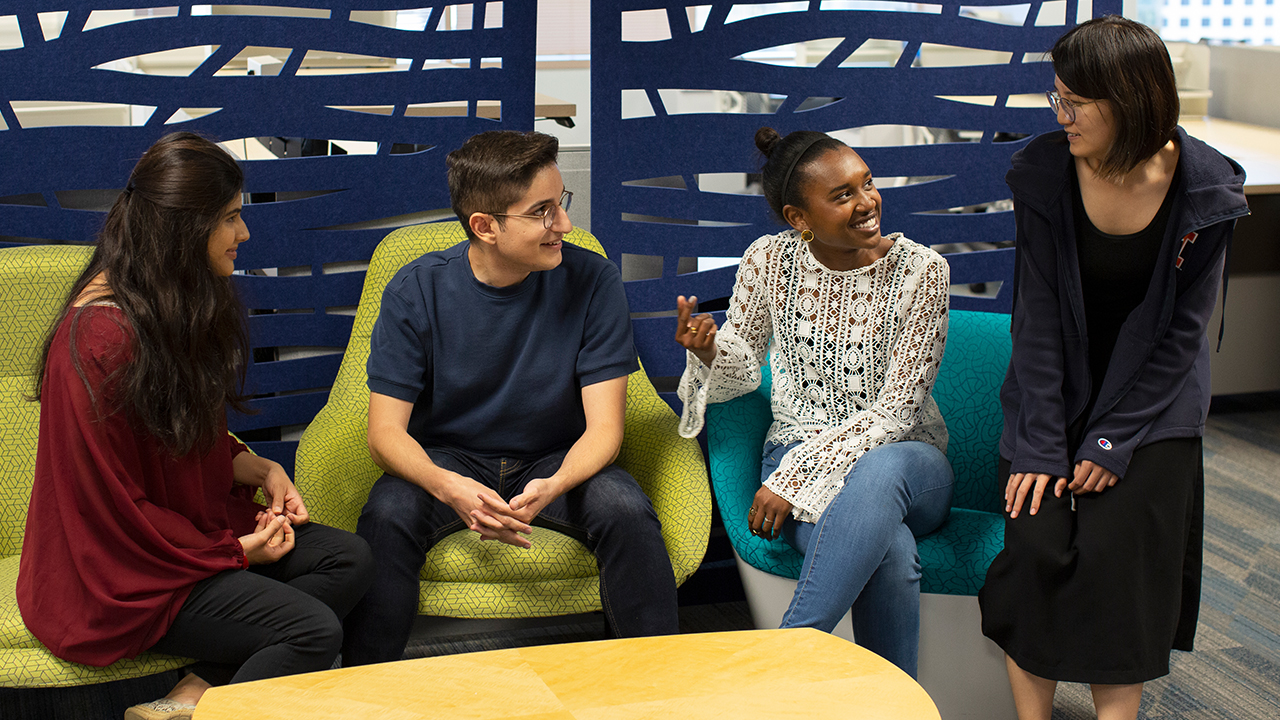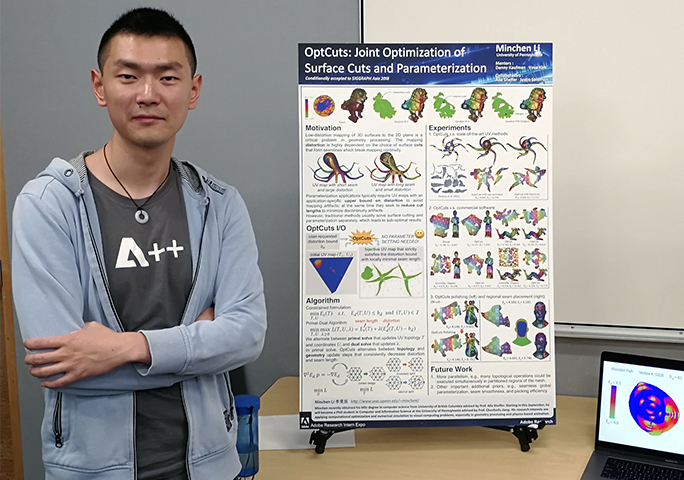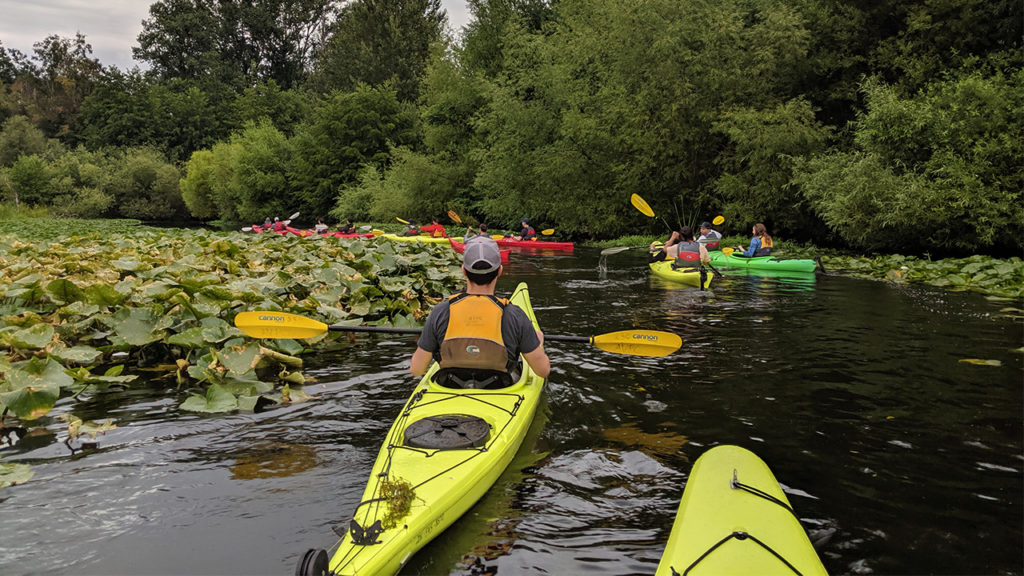
By Meredith Alexander Kunz
Why do Adobe Research interns come back year after year? The answer comes down to one critical word: Freedom.
Interns value the ability to pursue what excites them and to keep learning. “I love the freedom,” says Chan Young Park, a two-time intern in San Jose.
“I had considered a few other companies for my internship. I ended up picking Adobe, because I knew I could do the research I really wanted to do there. And that’s why I chose to come back,” Park explains. She focused on work related to her PhD, helping her advance knowledge in her field.
“Rather than solve a specific product-related problem identified by the company, I wanted to be able to explore things and make innovations,” echoes Minchen Li, a PhD student who recently completed his third Adobe Research internship in Seattle.
Gabrielle Taylor puts it this way: “All ideas are welcome here. There’s a lot of creative flexibility, and you can come up with an idea and try it.” She has interned twice as a PhD student and is also a GEM fellow.
Adobe Research intern mentors support this approach. “This is an open culture—interns aren’t micromanaged, and they can make decisions,” explains Doo Soon Kim, a senior research engineer who served as a mentor to Park and Anthony Colas this summer.
From repeat interns… to full-time hires
At Adobe Research, student interns are often motivated to come back a second time, and a third, and even a fourth. In 2019, around 17 percent of US interns were “repeats.”
These experiences lead not only to academic publications in major journals and conferences. They also are reflected in the lab’s hiring.
Internships represent an important source of future full-time team members for Adobe Research. The percentage of new graduates hired by Adobe Research who had previously completed an internship with the group has ranged from 43 percent to well over 50 percent in recent years. For the current year, the rate is approaching 80 percent.

Mentors and collaborators
What else do interns love about Adobe Research? It’s the people—and above all, their mentors.
“Having some of the best minds in the world mentoring you, you get a lot of good advice,” says Taylor. She worked with Franck Dernoncourt. “Interning here definitely helped me before going into a PhD program.”
This collaboration can happen even before or well after the official internship dates. “As soon as you sign the offer, you get to talk to your mentors, and you can start to decide what your project is going to be about,” says Park.
Some repeat interns keep collaborating far beyond their internship. “I’ll continue working together with my mentors when I go back to my university, until the project is finished and published. There are more ideas to try, and more exciting things to learn,” reports Li, whose mentors are Danny Kaufman, Vladimir (Vova) Kim, and Timothy Langlois.
Mentors go out of their way to encourage students to apply. Park, who is from South Korea, says that a chance encounter with an Adobe Research scientist at a conference led to her learning that an international student would be eligible for an internship.
A tailored experience
Mentors help shape an internship according to a student’s level and interests. “We tailor it to the intern,” says Doo Soon Kim. “I work with the students to make their internship mutually beneficial both for their studies and for Adobe.”
He explains that repeat interns are particularly quick to get started on their internship research. “The learning curve is much smoother. They know the kinds of achievements they should focus on.”
Both of Kim’s student interns will file a patent based on their work over the summer, and Park will submit a conference paper. These accomplishments help interns build their credentials.

Self-driven interns find peer support
Interns also take initiative to start new collaborations with their peers.
Anthony Colas, a second-time intern, explains that he helped launch a summer reading group for academic papers in his research area, natural language processing. Along with three other interns, Colas chose papers to read and presented on related topics. “It’s very cool, and it is self-driven,” he says.
Taylor benefitted from interacting with other interns as well as mentors. “My favorite part of interning is that I’m surrounded by people who are like-minded, and I can learn a lot that I can’t learn in school,” she explains.
Adobe’s collegial culture stood out for Taylor. “I had experiences of being talked over or looked over in other companies. Here I definitely feel included, and I have a voice.”
Add a dash of fun
There’s more to an Adobe Research internship than a research project. Interns can enrich their skills by participating in large internship showcases and in an intern code quality workshop. Lab locations also plan bonding and fun activities, including social lunches, outdoorsy get-togethers, and cultural events.
“The kayaking and rafting events last year were very exciting. I would never have expected that during an internship we could enjoy activities like that with our coworkers,” Li says. He and his colleagues explored Seattle’s waterways again during an outing this past July.
“In San Jose, we get to socialize at intern events. It’s fun because most of us aren’t from here. We get to explore together,” says Taylor.
